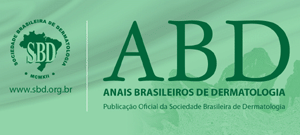BACKGROUND: Onychomycoses are frequent fungal infections, responsible for 15% to 40% of nail plate diseases. In spite of great existing knowledge on the etiological agents and of the emergence of numerous antifungal drugs, difficulties still remain in making a correct diagnosis. OBJECTIVE: To compare direct mycological examination, histopathology and culture of patients with suspicion of onychomycosis and to verify the sensitivity and specificity of the methods. METHODS: Forty patients with clinical suspicion of onychomycosis were chosen and evaluated with the three diagnostic methods. For each of the methods, sensitivity, specificity, predictive positive value and predictive negative value were calculate. RESULTS: Direct mycological examination was positive in 29 patients (72.5%), histopathology in 14 (35%), and culture in 22 (55%). Found specificities were: direct mycological examination: 78.6%, histopathology: 92.9% and culture: 100%. There were no significant differences in the specificity of the methods (p > 0,05). In the analysis of the predictive positive value and the predictive negative value, culture and direct mycological examination had the largest efficacies, respectively. CONCLUSION: Direct mycological examination was the most reliable exam when its result was negative. Culture showed specificity when positive. As to the biopsy, it was found not to be sensitive and presented equivalent specificity to the other evaluated exams.
Diagnosis; Microscopy; Onychomycosis



